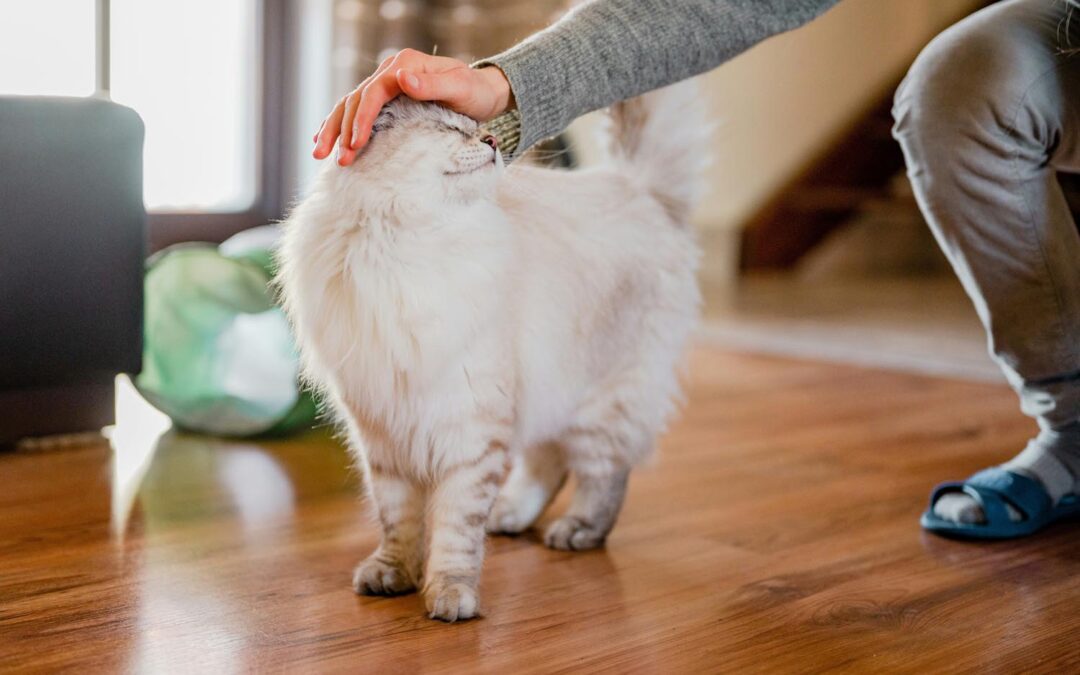Has your dog or cat been drinking more water than usual or showing signs of fatigue? As pet owners, we often notice small changes in our furry friends’ behavior, but sometimes these changes can be signs of a more serious underlying issue—like diabetes. Early detection of diabetes in dogs and cats is crucial for managing the condition and ensuring your pet stays healthy and happy. Let’s explore the signs of pet diabetes, the importance of diagnosis, and how you can manage it with the help of your veterinarian.
What is Diabetes in Pets?
Diabetes mellitus is a health condition that affects dogs and cats when their bodies struggle to produce or use insulin properly. Insulin is a hormone responsible for controlling blood sugar (glucose) levels by facilitating the absorption of glucose into the body’s cells, where it is used for energy. When there is a deficiency of insulin or the body cannot utilize it effectively, glucose accumulates in the bloodstream, resulting in elevated blood sugar levels, a condition known as hyperglycemia.
There are two primary types of diabetes in pets:
- Type 1 Diabetes (Insulin-Dependent): Typically found in dogs, this condition occurs when the pancreas doesn’t produce enough insulin. Pets with Type 1 Diabetes require daily insulin injections to regulate their blood sugar levels.
- Type 2 Diabetes (Insulin Resistance): More common in cats, this occurs when the body becomes resistant to insulin. It’s often linked to obesity and can be managed through diet changes, medication, or sometimes insulin therapy.
Regardless of the type, diabetes in pets requires consistent care and monitoring. Recognizing the early signs of diabetes can make a big difference in treatment success.
Common Signs of Diabetes in Pets
As a pet owner, it’s important to be aware of the symptoms of diabetes so you can act quickly. The following signs may indicate that your dog or cat is developing diabetes:
- Increased Thirst (Polydipsia) and Frequent Urination (Polyuria)
One of the earliest signs of diabetes in pets is excessive thirst (polydipsia) and frequent urination (polyuria). High glucose levels in the blood cause the kidneys to work harder, leading to dehydration and increased thirst. As a result, pets may urinate more frequently, and some may have accidents indoors. If this behavior appears suddenly, it’s important to consult your veterinarian.
- Weight Loss Despite Increased Appetite
Despite eating more, pets with diabetes can still lose weight. Diabetic pets lose weight because their bodies can’t use sugar for energy, so they burn fat and muscle instead. If your pet seems ravenous but continues to lose weight, it could be a sign of diabetes.
- Lethargy or Lack of Energy
Diabetic pets may feel tired and sluggish because their bodies struggle to use sugar for energy. You might notice your pet sleeping more, becoming tired easily, or losing interest in activities they once enjoyed. Lethargy combined with other symptoms like thirst and weight loss could indicate diabetes.
- Cloudy Eyes or Cataracts (Especially in Dogs)
Cataracts are a common complication of diabetes, especially in dogs. High glucose levels in the eye can cause the lens to become cloudy, leading to blurred vision or blindness. If your dog’s eyes look cloudy, or they are bumping into objects, it could be a sign of cataracts related to diabetes.
- Recurring Urinary Tract Infections
Pets with diabetes are more prone to urinary tract infections (UTIs) because high blood sugar levels promote bacterial growth. Frequent urination, straining to urinate, or blood in the urine can all indicate a UTI. Recurrent infections may signal underlying diabetes, and it’s essential to have your pet tested.
- Sweet-Smelling or Fruity Breath (Ketoacidosis in Advanced Cases)
In advanced diabetes, diabetic ketoacidosis (DKA) can develop, causing a pet’s breath to have a sweet or fruity odor. This condition results from the body breaking down fat for energy, producing dangerous levels of ketones. DKA is a medical emergency that can cause vomiting, dehydration, and even coma if untreated, so immediate veterinary attention is required.
Why You Shouldn’t Ignore the Signs
Diabetes in pets is a serious condition, and ignoring the early signs can lead to severe complications. Left untreated, diabetes can cause damage to your pet’s kidneys, eyes, nervous system, and even lead to life-threatening conditions like diabetic ketoacidosis (DKA).
In dogs, one of the most common complications is the development of cataracts, which can lead to blindness. Cats, on the other hand, may develop hind leg weakness or nerve damage, making it difficult for them to walk. Without proper insulin treatment, pets with diabetes can suffer from dehydration, organ failure, and even death.
Recognizing the signs early and getting a diagnosis can make all the difference in your pet’s quality of life. With the right treatment plan, pets with diabetes can live long, happy lives.
Diagnosing Diabetes in Pets
If you suspect your pet may have diabetes, the first step is to bring them to your veterinarian for a thorough checkup. Diagnosing diabetes involves several steps, including:
- Blood Tests to Measure Glucose Levels
A blood glucose test is a primary method for diagnosing diabetes in pets. It measures the amount of glucose (sugar) in the bloodstream. Persistently high glucose levels indicate diabetes, but stress can temporarily raise blood sugar, especially in cats, so additional testing like a fructosamine test may be needed to confirm long-term glucose control.
- Urine Tests for Glucose and Ketones
Urine tests help support a diabetes diagnosis by checking for glucose and ketones. Healthy pets shouldn’t have glucose in their urine, but diabetic pets may have glucose “spill over” into their urine. The presence of ketones indicates diabetic ketoacidosis (DKA), a serious complication. Urine tests may also reveal urinary tract infections (UTIs), which are common in diabetic pets.
- Additional Diagnostic Tests
In some cases, your veterinarian may recommend other diagnostic tests to further evaluate your pet’s overall health and ensure there are no other conditions contributing to the symptoms. Other tests, like a Complete Blood Count (CBC) and Serum Biochemistry Panel, assess your pet’s overall health and check for infections, inflammation, or organ function issues. A urine culture may be used to identify bacteria causing recurrent UTIs, helping to tailor treatments alongside blood sugar control. These tests ensure no other conditions are complicating the diabetes diagnosis.
Physical Examination and Symptom Review
In addition to lab tests, your veterinarian will conduct a physical exam and ask about your pet’s health history and behavior. They’ll assess key signs like weight changes, appetite, thirst, urination, coat condition, and eye health for cataracts. The vet may also palpate your pet’s abdomen to check for any signs of liver enlargement or other complications related to diabetes. This thorough examination helps guide the management plan.
Managing Diabetes in Dogs and Cats
Once your pet is diagnosed with diabetes, the good news is that it can be managed with proper care. Our veterinarians will help you create a treatment plan that may include:
- Insulin Injections: Insulin injections are essential for managing diabetes in pets, as they help regulate blood sugar levels by allowing glucose to enter the cells. Most diabetic pets need one to two injections daily, which your veterinarian will teach you to administer at home. The correct insulin dosage is determined based on your pet’s weight, diet, and activity levels, and regular monitoring is crucial to prevent complications.
- Glucose Monitoring: Monitoring your pet’s blood glucose levels helps prevent dangerous fluctuations, such as hypoglycemia (low blood sugar) or hyperglycemia (high blood sugar). Blood glucose can be monitored using a pet-specific glucose meter, and your vet may suggest daily home monitoring or periodic checks at the clinic. Routine vet visits and glucose testing ensure proper management of your pet’s insulin needs.
- Dietary Management: A balanced diet is key to managing diabetes in pets. Your veterinarian may recommend a high-protein, low-carbohydrate diet to stabilize blood sugar levels. Consistent meal timing, particularly around insulin injections, is critical to avoid hypoglycemia. Prescription diabetic diets and weight management are also vital, especially for overweight pets or cats with Type 2 diabetes.
- Medications: Veterinary medicine is continually evolving and creating options to help treat and manage diabetes in pets. In particular, there are several new oral medication options for our feline friends!
For products like insulin, glucose monitors, and special diets, you can conveniently visit the Homey Gnome Veterinary Clinic online pharmacy to find everything you need to help manage your pet’s diabetes.
Don’t Ignore the Signs: Spot Diabetes Early
The sooner diabetes is detected and treated, the better your pet’s chances are for a healthy and happy life. If your dog or cat is showing any of the signs of diabetes—like increased thirst, frequent urination, or unexplained weight loss—don’t wait to seek help.
At Homey Gnome Veterinary Clinic, we’re here to support you every step of the way. Schedule an appointment today, and let’s get your pet on the path to better health!
Frequently Asked Questions
- Can diabetes be cured in pets?
Unfortunately, there is no cure for diabetes in pets. However, with proper management—including insulin therapy, diet changes, and regular glucose monitoring—pets can lead happy and healthy lives.
- How often will my pet need insulin injections?
Most diabetic pets require insulin injections once or twice daily. Your veterinarian will provide guidance on the correct dosage and frequency based on your pet’s needs.
- Can my pet’s diabetes go into remission?
In some cases, especially with diabetic cats, diabetes can go into remission with weight management and proper care. Remission means the pet no longer needs insulin, but their condition still requires ongoing monitoring.
- What happens if diabetes is left untreated?
Untreated diabetes can lead to serious health complications, including cataracts, kidney failure, diabetic ketoacidosis, nerve damage, and even death. This is why early diagnosis and treatment are critical.
- Can I prevent my pet from getting diabetes?
While not all cases of diabetes can be prevented, maintaining a healthy weight and providing a balanced diet can reduce the risk. Regular vet checkups are also key to catching any early signs of the disease.
Image credit: Unsplash


